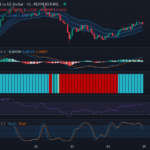
British Pound (GBP) vs US Dollar (USD): Comprehending Consolidation and Upward Bias – 25/04/2025
Tháng 4 24, 2025GBPUSD Market Prediction: Sentiment Unchanged, Fear Persists
Tháng 4 25, 2025EURUSD Sentiment Shift Analysis: Fear-Driven Trends
The dynamic nature of the forex market is aptly exemplified by the EURUSD currency pair, which has recently experienced shifts driven by varying market sentiments. Within the landscape of forex trading, one prevailing sentiment is fear, which frequently catalyzes significant movements in currency pairs, influencing both short- and long-term trading strategies.
EURUSD Technical Data Point: 64% Short Positions Consistency
A noteworthy statistic in recent EURUSD activity is the consistency of short positions, which stands at 64%. This figure highlights a prevailing bearish sentiment among traders who anticipate a decline in the euro relative to the US dollar. Such a substantial percentage of short positions can often be attributed to apprehensions surrounding macroeconomic factors, including geopolitical tensions and economic reports impacting the European economy. The persistence of this sentiment aligns with a market environment marked by uncertainty and fear, driving traders to position themselves defensively against potential downturns in the currency pair.
Correlation Between EURUSD Sentiment and Price Action
Understanding the correlation between EURUSD sentiment and its price action is crucial, particularly in a market characterized by fear-driven trends. The alignment or divergence of market sentiment with actual price movements offers valuable insights into trader psychology and market dynamics. When sentiment indicators, such as the 64% short positions, are consistent over time, they may signal a broader consensus or fear-induced caution among market participants.
However, the true test of sentiment’s predictive power lies in its correlation with price action. For the EURUSD pair, examining whether these short positions result in a sustained downward price trend is essential. A strong correlation would confirm the efficacy of sentiment analysis as a tool for forecasting price movements, while a divergence might warrant a re-evaluation of underlying market assumptions and a closer examination of external influences impacting the currency pair.
In the current trading environment, analyzing these sentiment trends in conjunction with other technical and fundamental indicators can enhance understanding and inform strategic trading decisions focused on the EURUSD pairing.
EURUSD Price Prediction Based on Sentiment Analysis
Understanding sentiment analysis in the EURUSD trading realm requires a firm grasp of the statistical confidence levels and targets that guide market participants. Sentiment analysis is a crucial tool for traders, providing insights into market psychology and subsequently affecting the currency pair’s price movements.
EURUSD Statistical Confidence Levels and Targets
Market sentiment plays a pivotal role in shaping the EURUSD exchange rate, with traders often driven by emotional responses to economic data, geopolitical events, and market rumors. Analyzing this sentiment helps traders predict potential sideways movements indicative of indecision or fear in the marketplace. The presence of sideways behavior signals that traders are looking for concrete data before making significant commitments on their positions.
Sentiment analysis often involves deciphering the market’s overall attitude towards the EURUSD. Although no statistical confidence levels or explicit target values are specified in the provided data, it’s clear that when sentiments are dominated by uncertainty, the currency pair may enter periods where prices remain range-bound.
In trading theory, a sentimental tilt toward fear can cause volatility; however, it may also result in a sideways range when fear is pronounced, yet no substantial market-altering information is present. During such phases, traders might observe the EURUSD hovering around its current levels, awaiting clearer directional cues.
For traders focused on market sentiment, understanding these sideways trends in response to fear is essential. Strategic positioning involves waiting out the period of uncertainty, closely monitoring for any shifts that could lead to a breakout or breakdown from the established range.
In summary, while specific statistical confidence levels and targets are not detailed, recognizing the influence of fear and subsequent sideways movement is crucial for effective trading in the EURUSD market, offering pathways to anticipate future price patterns based on sentiment-driven market behaviors.
EURUSD Trading Strategy Recommendations
In the realm of forex trading, the EURUSD currency pair often exhibits considerable market interest due to its liquidity and volatility. Understanding the current market environment and employing appropriate strategies is crucial for traders navigating the EURUSD landscape. At times, the market may display a sideways movement, indicating a lack of clear directional momentum. During these phases, traders often rely on specific techniques to capitalize on potential opportunities without significant trends.
A common scenario in EURUSD trading is a sideways market, typically observed when there is equilibrium between supply and demand. When the market moves in such a pattern, characterized by price oscillating within horizontal channels, traders might consider employing strategies that capitalize on the channel’s boundaries. For instance, range-bound strategies can include buying at the lower support levels and selling at the upper resistance levels. This approach enables traders to take advantage of predictable swings while minimizing risk exposure.
Moreover, the presence of fear and uncertainty in the market can further accentuate a sideways pattern, as investors may hesitate to drive prices in a definitive direction. Market participants often adopt a cautious stance during such periods, reflective of a larger risk-averse sentiment. Oscillator tools, such as the Relative Strength Index (RSI) or Moving Average Convergence Divergence (MACD), can assist traders by providing insights into potential overbought or oversold conditions within the channel, thus highlighting potential entry or exit points.
By understanding and adapting to these market conditions, where sideways movements and fear influence the EURUSD dynamics, traders can strategically position themselves to either leverage the range-bound movement or preemptively prepare for any potential breakout or new trend development.
